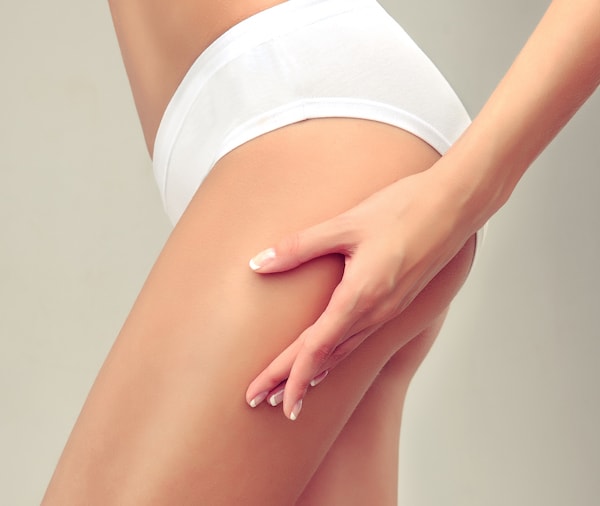A thigh lift removes excess skin and fat in order to provide a more contoured appearance to the thighs and lower body. The procedure also tightens the skin to give a smoother and younger look. While many thigh lift surgeries are done on the inner thigh, they can also be performed on the outer thigh. In addition, a thigh lift can be done at the same time as a tummy tuck, buttock lift or liposuction.
Good Reasons for Thigh Lift
-
Gaining a toned and youthful appearance
-
Improve self-confidence
-
Get rid of any discomfort from excessive skin and soft tissue
-
More wardrobe choices thanks to eliminating excess skin and fat
Bad Candidates for Thigh Lift
-
A person who is not in good overall health
-
Patients with unrealistic expectations
-
Someone who is not willing to exercise to maintain the results
-
A person that is not emotionally ready for the changes from the surgery
Cost Expectations
According to the American Society of Plastic Surgeons, as of 2015, the average cost of a thigh lift is $4575. This price can be higher as a number of factors determine the final cost including:
-
The extent of the thigh lift (amount of tissue, fat and excess skin removed)
-
The type of thigh lift performed
-
Any additional procedures performed along with the thigh lift
-
Anesthesia fees
-
Facility fees
-
Additional fees charged by the surgeon
-
The location in the country where the surgery is performed
Choosing the Type of Thigh Lift
There are a number of thigh lift techniques to choose from and they include:
-
Inner Thigh Lift – A technique designed to eliminate excess fat from the inner thighs. The surgeon makes an incision in the area where the thigh and the pubic area meet. The excess skin and fat is removed from the area and the remaining skin is tightened to provide a better contour to the leg. Making the incision where the pubic area and thigh meet allows any scarring to be hidden by underwear.
-
Bilateral Thigh Lift – This technique is also known as an “outer thigh lift” because it tightens the skin located on the outside and the front of the leg. The incision, made on the top of the leg near the area where the lower edge of underwear would be located, results in the shape of a “V”. The surgeon removes excess skin before pulling up the remaining amount of skin and attaching it to the same area. A bilateral thigh lift tightens the skin on both sides of the leg thanks to this technique. A bilateral thigh lift works well on patients who have an excess amount of skin due to a large weight loss.
-
Mini Thigh Lift – A mini thigh lift addresses tissue that sags in the upper third of the leg. The final results are not as dramatic as those found with an inner thigh lift and the scarring is confined to the groin area.
-
Medial Thigh Lift – This version of a thigh lift reduces the amount of excess fat and skin located on the upper part of the inner thigh. The surgeon makes the incision in the groin and the incision goes to the back of the buttock crease or even the hip area. The surgeon removes excess fat and skin to tighten the thigh and contour the leg. Medial thigh lift is a good option for patients who have excess skin due to a large weight loss and want to address both the thighs and the shape of the legs.
Risks and Complications
Patients need to be aware of potential risks and complications before undergoing any type of thigh lift. Some of these risks and complications include:
-
Seroma
-
Scarring
-
Infection
-
Bleeding
-
Necrosis
-
Hematoma
-
Loss of sensation
-
Asymmetry of the thighs
-
Swelling and bruising
-
Allergic Reaction
-
Numbness
-
Vein inflammation
Recovery Information
Following a thigh lift, patients will need assistance from a family member or friend for about a week after surgery. Patents need to position their body in a manner that doesn’t stretch the thighs and sleep using pillows to remove pressure on the legs while also wearing a compression garment. Short walks are necessary soon after surgery to ensure good blood circulation. Any drains will be removed around a week after surgery. Most people return to work 2-3 weeks after surgery but will still need to wear the compression garment until around 4 weeks after the procedure. Light exercise and driving can be resumed 3 weeks after surgery and regular exercise is normally allowed after 6-8 weeks. The recovery process can take up to a year to complete.
Thigh Lift Results
The results from a thigh lift will not be immediately visible as the treated area will be covered with bruises and swelling. As these conditions resolve, a patient should notice a more contoured and slimmer appearance. It can take up to a year for the final results to be seen by the patient and the general public. If a patient follows the post-op instructions, as well as a healthy diet and exercise plan, the results should be long lasting.
MA
